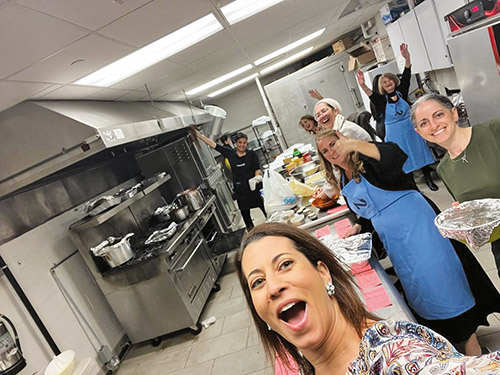
Something Sephardi is happening in Stamford. Broader than that—Middle Eastern, according to Aviva Maller, who was born in India to Jewish parents who had immigrated from Iraq. (“Jews from Iraq are Babylonian—we predate the Sephardim,” Jews associated with the Iberian Peninsula, she said.)
A visitor to Congregation Agudath Sholom on the evening of February 11 would have thought they had stumbled into a food court somewhere in… Cairo? Salonika? Aden? Baghdad? All of those locations and more, as 21 women from the congregation, assisted by the shul’s bat mitzvah group, served up precious family recipes for 120 guests at the “Middle FEASTern” food event, a showcase of the myriad cultures represented in the shul.
“We were cooking over the span of a week, and I got to meet women who were cooking different things, and either try out their techniques or learn how to make their delicacies, and that was a lot of fun,” Maller recalled. “It was beautiful and so nice to have this real community feeling coming out of sharing your background, your traditions.”
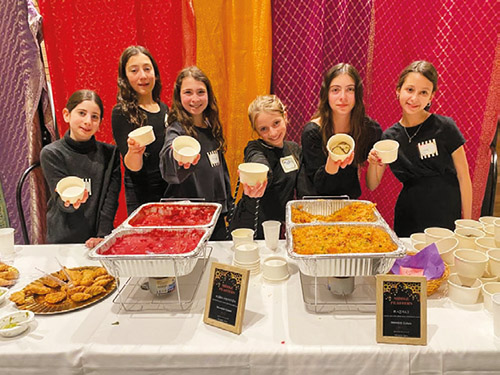
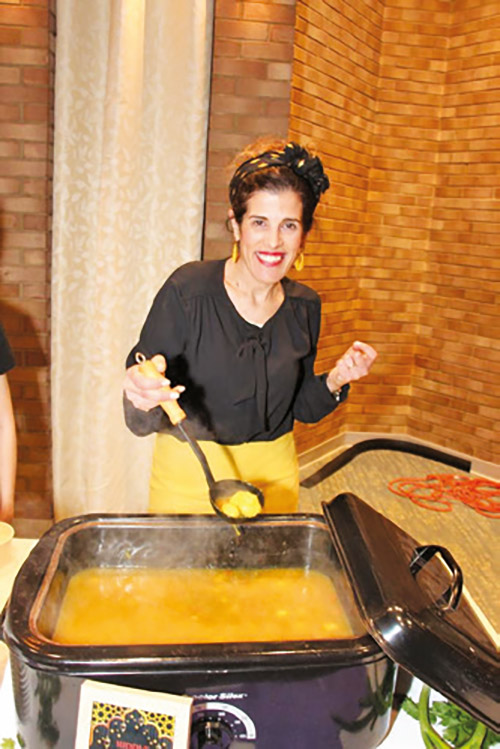
Two weeks later, entering Temple Beth El for a post-Havdalah cabaret, this same visitor would have wondered at the sounds emerging from the sanctuary: Arabic maqam melodies played by musicians on the oud; tunes sung in Ladino, Arabic and Hebrew … and the scent of Turkish coffee wafting through the foyer.
From the looks of things, what is loosely dubbed the Sephardi community is growing in Stamford. Once confined to a quarterly Shabbat service in a congregant’s basement or the shul’s social hall, the Agudath Sholom Sephardi minyan now meets every week at the synagogue, conducted by Sephardi rabbis and a variety of lay leaders. During the 5783 High Holidays, the large Sephardi minyan tent outside Agudath Sholom “was bursting at the seams,” said congregant Dr. Nimrod Dayan, attracting not only the regulars, but also Ashkenazi participants wanting to experience something different. Inspired by the Sephardi legacy of its former cantor, George Mordechai, and encouraged by congregants’ requests, Beth El is planning future events that incorporate Jewish musical traditions from outside the Ashkenazi world.
This scenario was unimaginable to Agudath Sholom member David Cohen when he moved to Stamford 13 years ago with his wife, Meredith, and two daughters. “At that time, there really was not much Sephardi presence at all,” Cohen said. “There were a few Sephardi families who maintained their own minhagim, but there was no Sephardi minyan.”
A few years after the Cohens’ arrival, those families started gathering regularly, aided by the appearance of the Siscovick family. Talia Siscovick is the daughter of Rabbi Elie Abadie, now senior rabbi of the Jewish Council of the Emirates in the United Arab Emirates. When she and her husband, Jonathan, moved to Stamford, the Sephardi minyan really picked up steam.
“With Talia’s connection to Rabbi Abadie and brothers, all very capable chazanim, we were able to start minyanim periodically,” Cohen recalled. “Every two or three months, her family would come to town and we instantly had a minyan. We really owe Talia and her family a tremendous debt of gratitude, because that’s really what got us started.”
The group would meet in the Siscovicks’ basement or backyard or, from time to time, at Agudath Sholom if space permitted, led alternately by the Abadies and by Rabbi Aryeh Greenberg of Bi-Cultural Hebrew Academy in Stamford, until 2019, when the Siscovicks made aliyah and Rabbi Greenberg moved on.
All the while, more Sephardi families were arriving in Stamford and word spread about the minyan, mostly via Agudath Sholom and a WhatsApp group. The core lay leaders—David Cohen, Dr. Nimrod Dayan, Dr. Leon Hanna—kept the regular Shabbat minyan going, but the new challenge was finding Torah readers. Dayan would send around a weekly signup sheet with the aliyot; his son, a new bar mitzvah, would pick up any unclaimed readings.
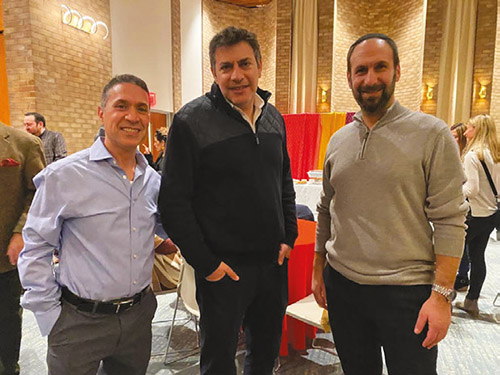
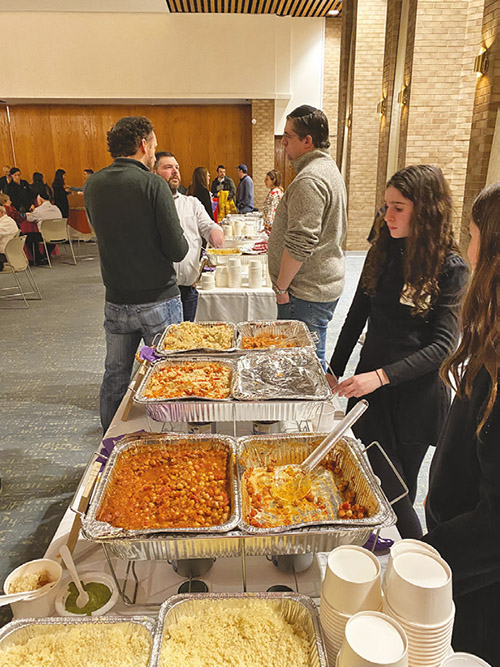
With the help of Agudath Sholom’s Rabbi Daniel Cohen, the minyan hired Chazan Ithamar Kashi to lead High Holiday services in 2019. Six months later, COVID descended, and the minyan was confined to meeting in backyards. In summer 2022, Agudath Sholom hired Kashi to lead the minyan monthly.
Then—a min haShamayim moment. “The day after we signed with Ithamar, I show up at Agudath Sholom for Mincha-Maariv and David Cohen says, ‘I want to introduce you to Rabbi Duwek,’” Dayan recalled. “My first question is, ‘Are you really a rabbi?’ and he looks at me and says, ‘Not only am I a rabbi, I am a baal tefillah, a baal koreh, and a baal tokea.’”
Yaakov Duwek and his wife, Hilla, joined the Bi-Cultural community as shlichim and teachers in 2022. Both he and Kashi bring a regular clergy presence to the weekly minyan, which now meets at Agudath Sholom, in a brand-new beit midrash with three of its own Sephardic sifrei Torah and with Sephardic siddurim donated by Rabbi Cohen.
“When we came to Stamford, we found a simply amazing community here—the Agudath Sholom community welcomed us,” Rabbi Duwek recalled. “I asked, ‘There is no Sephardic minyan shul here?’ I found a couple of people—David Cohen and Nimrod Dayan—and they said, ‘Yes, we have it once in a while, but … We don’t have someone who will read the Torah, someone to lead, someone to blow shofar.’ I said, ‘I’ll read the Torah, I will lead, I will blow shofar—just let’s do it.’”
Rabbi Duwek also offers a weekly shiur, in Hebrew, sometimes with realtime translation to keep all participants on the same page.
“We welcome all comers,” Dayan said. “There’s Syrian influence, there’s Egyptian influence, there’s Bukhari influence … David Cohen’s background is Iraqi; mine is Syrian; Leon Hanna’s is Egyptian; Rabbi Duwek’s is, for lack of a better term, Yerushalmi. So depending on which one of us is leading, you’re going to get a tune from that community.”
The Sephardi minyan has become a staple part of Agudath Sholom. “In the lobby, like in many shuls, there is a board that tells you what’s happening over the next few days,” David Cohen said. “Many months ago, when I first saw the Sephardi minyan on that board, I knew we had made it.”
The Duweks will eventually return to Israel, but the minyan seems to be on solid footing. “The members are very dedicated; there are people walking 40 minutes, 50 minutes from home on Shabbat for davening—I’m actually living five minutes from the shul and I’m thinking to myself, ‘If they make this effort, I have to make my effort twice,’” Rabbi Duwek said. “I’m trying to bring everything that I know to help them to strengthen this minyan, and not just for the time that I will be here, because I’m not going to stay here for long—so that they will have the base and can do it by themselves.”
What percolates below the surface of this multicultural display of Jewish life is the essence of Judaism itself. “Having the Sephardi minyan under our roof creates more unity,” said Rabbi Cohen. “At the end of the day, the liturgy may be different, but 90% of everything we do is focused on similar values, similar aspirations. At Mount Sinai, there was no such thing as Ashkenazim and Sephardim; we’re all part of the Jewish people. So the growth of the Sephardi community is just another entry point for people into the Jewish community, regardless of your background, regardless of your observance; it creates another flavor of Judaism that may appeal to people in their journey.”
The same is true for Cantor Katie Kaplan at Temple Beth El. Incorporating Sephardi elements in services ties together past and present, unites Jews of all backgrounds.
With the support of Rabbis Daniel Cohen and Moshe Kurtz at Agudath Sholom, the Sephardi and Middle Eastern community of Stamford, and the Ashkenazi participants interested in expanding their Jewish experience, David Cohen will see an aspiration come to life. “My wife’s parents live in Boca Raton, and when we visit, I pray at the Boca Raton Synagogue, an Ashkenazi shul with a very large Sephardic community,” he said. “It’s a beautiful example of how the two communities live and work together, and b’ezrat Hashem, we’re trying to build the same thing here.”
By Cynthia Mindell









